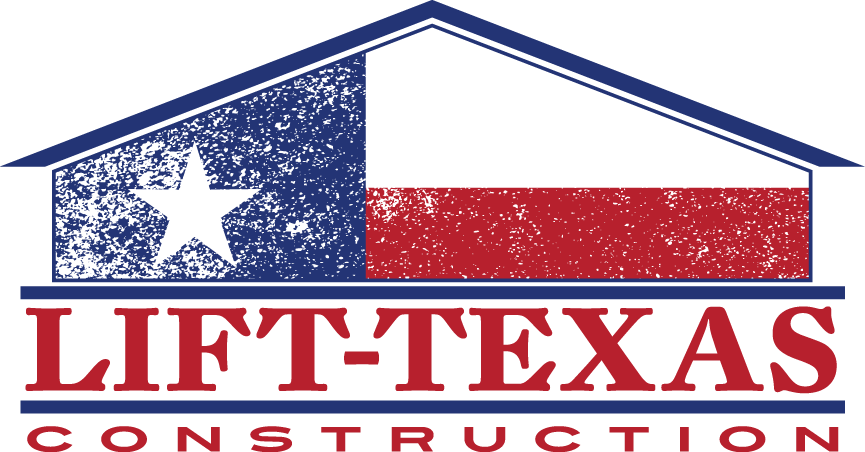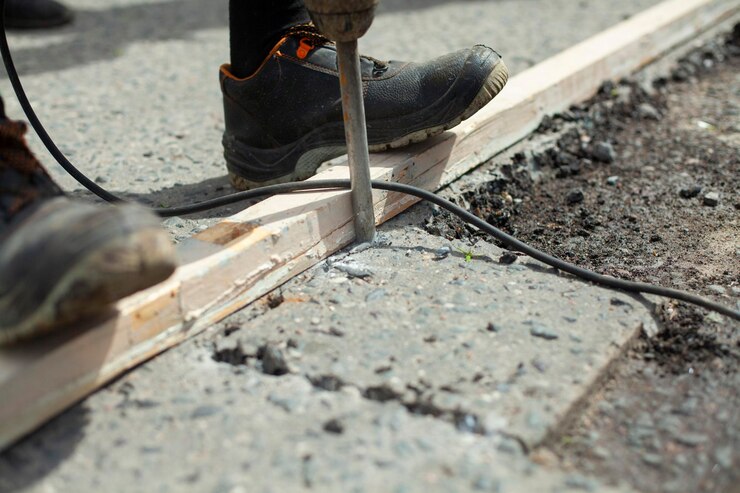When you notice your concrete driveway settling or your sidewalk developing uneven spots, you’re witnessing the effects of voids beneath your slabs. Voids or empty spaces beneath the concrete slab can lead to various issues such as sinking, cracking, and uneven surfaces. For homeowners in Alvarado and throughout the DFW area seeking concrete pier and beam repair DFW solutions, void filler foam represents a revolutionary approach to stabilizing your property’s foundation.
One of the best ways to fix these voids is by using polyurethane foam injection. This modern technique addresses the root cause of concrete settlement while providing long-lasting stability for your home or business. Understanding how void filler foam works and when to use it can save you thousands in replacement costs while protecting your investment for years to come.
Understanding Why Concrete Sinks and Settles
Concrete sinks because the soil or ground underneath it erodes away or settles over time. In Texas, several factors contribute to this common problem that affects both residential and commercial properties.
Soil Conditions in the DFW Area
These are some of the most common reasons concrete slabs start to sink in Texas. As we mentioned, most of the soil in our area is Houston black soil, which has a very high clay content. This makes it incredibly sticky and moldable when wet. So, when it rains, the clay soaks up as much water as possible and begins to swell. Then, as the soil dries out, it begins to shrink and can no longer support the pressure from the heavy concrete on top of it, causing your slabs to sink irregularly.
Expansive soil moves a lot, especially when the weather goes from one extreme to another like it does here in Texas. We get periods of intense rainfall and periods of significant drought. So that means that every year the soil goes through movement cycles of seasonal settlement and rebounding.
Water-Related Settlement Issues
When water has access to the underside of a concrete slab, it can wash out and erode away the soil holding it up, causing the slab to settle. Poor drainage around your property can create ongoing problems as water continues to undermine the support structure beneath your concrete surfaces.
Water from several sources can wreak havoc on concrete surfaces. Rainfall runoff, improper grading, or poor drainage can cause water to hang around too long or flow near concrete, causing settlement and erosion.
Construction and Compaction Issues
This loosened soil has to then settle down again, and it can take between 5 to 10 years for disturbed or loosened soil to settle and compact naturally. When concrete is poured on top of that loosened soil, it will eventually sink along with the soil as it compacts naturally over time.
What Is Void Filler Foam?
The foam used for void filling, often referred to as polyurethane foam, is a two-component system that expands upon mixing. This specialized material offers significant advantages over traditional repair methods like mudjacking or complete slab replacement.
How Void Filler Foam Works
This process involves the injection of a dual liquid material underneath the slab through penny-sized holes drilled in the concrete. Specially formulated polyurethane foam is pumped through the slab reaching the subgrade underneath. The liquid foam fills voids and expands rapidly to compact the earth beneath the slab.
Polyurethane foam expands quickly after being injected, allowing the voids to be filled efficiently. This process requires minimal disruption to the surrounding area and can often be completed in a matter of hours.
Key Properties of Modern Foam Systems
PolyLevel® is a state-of-the-art concrete leveling method that uses high-density polymer-expanding foam to achieve slab stability. PolyLevel® is 50 times lighter than normal mudjacking. It only weighs 2 pounds per cubic foot!
The foam is lightweight, so it doesn’t add additional pressure on the underlying soil, while still providing strong support to the concrete slab. Polyurethane foam is resistant to water, ensuring that it won’t be affected by moisture or water erosion in the future, making it an excellent long-term solution.
The Void Filling Process
Initial Assessment and Preparation
Before beginning any void-filling project, our experienced technicians conduct a thorough evaluation of your concrete surfaces. This assessment identifies the extent of settlement, locates void areas, and determines the best injection points for optimal results.
Penny-sized holes are drilled through the damaged slab at 5-foot intervals. These small access points minimize disruption to your property while providing adequate coverage for the foam injection process.
Foam Injection and Expansion
High-density polyurethane foam injected into voids quickly fills the open space and tightly seals the area. This can be done above the void through an injection port, or the foam can be sprayed along any open sides.
As the foam hardens, it locks the slab in place. We call this stabilization. When lifting is required, additional foam can be applied with carefully calibrated pressure to raise the slab to the desired height.
Completion and Cleanup
Drill holes are filled with sanded concrete. The entire process typically completes within a single day, allowing you to use your concrete surfaces immediately without waiting for curing time.
Advantages of Void Filler Foam Over Traditional Methods
Speed and Convenience
Not only is it durable and cost-effective, but it’s much faster than other repair methods like mudjacking or full slab replacement – plus, it requires fewer materials, which means less mess all around!
Since this process can be done without major demolition or downtime, it’s ideal for both residential and commercial applications where disruption needs to be minimized.
Long-Term Durability
Polyurethane foam creates a permanent, stable foundation under your concrete, preventing future voids from forming. The fully-sealed PolyLevel® injection is waterproof, meaning that any moisture that seeps in from the soil underneath the slab won’t cause future cracks or sinking.
Cost-Effectiveness
Our typical repair is well under 50% less than cost of replacement. This significant cost savings makes void filler foam an attractive option for homeowners and property managers looking to address settlement issues without breaking their budget.
Applications for Void Filler Foam
Residential Applications
Void filler foam works effectively on various residential concrete surfaces:
- Driveways and walkways
- Patio and pool deck areas
- Garage floors
- Sidewalks and pathways
- Basement floors
This method works for a variety of concrete surfaces, including driveways, walkways, garage floors, patios, and commercial spaces.
Commercial and Industrial Uses
Creating a strong foundation underneath and within the soil for building homes and structures. Preventing a sinkhole from caving in by reinforcing soil. Offering void-filling solutions that keep seawall barriers functional against storms and wind.
Foundation Repair Integration
For homes with pier and beam foundations, void filler foam can complement traditional foundation repair methods. When combined with proper pier installation and beam reinforcement, foam injection provides comprehensive support for your home’s structural integrity.
When to Consider Void Filler Foam
Early Warning Signs
Uneven concrete surfaces can be hazardous. By leveling and stabilizing your concrete, you eliminate trip hazards and create a safer environment.
Watch for these indicators that suggest void filling may be necessary:
- Visible cracks in concrete surfaces
- Uneven or tilting slabs
- Hollow sounds when walking on concrete
- Water pooling in unexpected areas
- Doors or windows that stick or won’t close properly
Preventive Applications
Secure Set Spray Foam can be used to easily fill both visible and hidden voids. Once filled, the concrete slab is fully supported and the potential for future erosion has be reduced to almost zero.
Acting early can prevent minor settlement issues from becoming major structural problems. Regular inspections and prompt void filling can extend the life of your concrete surfaces significantly.
Working with Professional Contractors
Choosing the Right Team
When selecting a contractor for void filler foam services, look for companies with experience in both concrete repair and foundation work. Our team serves Dallas, Fort Worth, Houston, Austin, and surrounding areas with comprehensive foundation and concrete solutions.
What to Expect During Service
Professional void filling services include:
- Comprehensive site evaluation
- Detailed explanation of the repair process
- Transparent pricing with no hidden fees
- Minimal disruption to your daily routine
- Immediate use of repaired surfaces
We provide detailed reports and transparent pricing before any work begins, ensuring you understand exactly what’s needed to protect your investment.
Maintenance and Long-Term Care
Protecting Your Investment
This results in a lighter load being put on the soil underneath the concrete slab, allowing you to rest easy about your concrete repair for years to come.
After void filling, proper maintenance helps ensure lasting results:
- Maintain proper drainage around concrete surfaces
- Address plumbing leaks promptly
- Monitor for new settlement signs
- Schedule periodic inspections
Warranty and Peace of Mind
Our lifetime transferable warranty ensures peace of mind for as long as you own your home. This warranty coverage demonstrates our confidence in the void filler foam process and provides additional value when selling your property.
Frequently Asked Questions
How long does void filler foam last?
Concrete leveling repairs are usually done in less than a day and can last for the life of the concrete slab itself. The polyurethane foam used in professional void filling applications is designed to provide permanent support, with many installations lasting decades without requiring additional maintenance.
Can void filler foam be used on all types of concrete?
This method works for a variety of concrete surfaces, including driveways, walkways, garage floors, patios, and commercial spaces. However, the suitability depends on factors such as the extent of damage, soil conditions, and the specific application. Our technicians evaluate each situation to determine if void filling is the appropriate solution.
Is void filler foam environmentally safe?
Using polyurethane foam is very cost effective, environmentally friendly, and causes very little downtime. Modern polyurethane foam systems are formulated to be environmentally responsible while providing superior performance. The foam is inert once cured and does not leach harmful chemicals into the surrounding soil.
How much does void filler foam cost compared to replacement?
Our typical repair is well under 50% less than cost of replacement. The exact cost depends on factors such as the size of the area, depth of voids, and accessibility. However, void filling consistently provides significant savings compared to complete concrete replacement while delivering comparable longevity.
Foundation movement and cracks occur due to soil expansion and contraction during wet and dry seasons. Our helical pier system is installed quickly, minimizing disruption to your property. When combined with void filler foam applications, you receive comprehensive protection against settlement and structural issues.
Don’t let sinking concrete compromise your property’s safety and value. Contact us today to schedule your free inspection and discover how void filler foam can restore stability to your concrete surfaces. We serve Dallas, Fort Worth, Houston, Austin, and surrounding areas with proven solutions that protect your investment for years to come.

